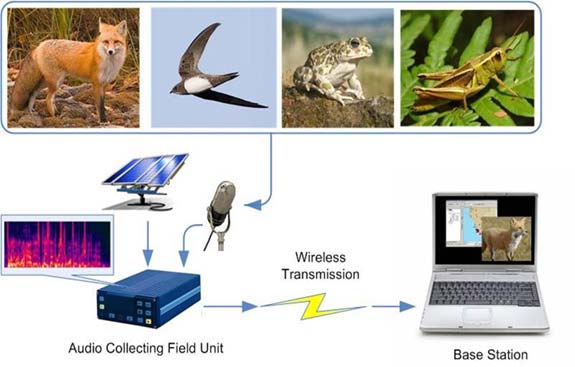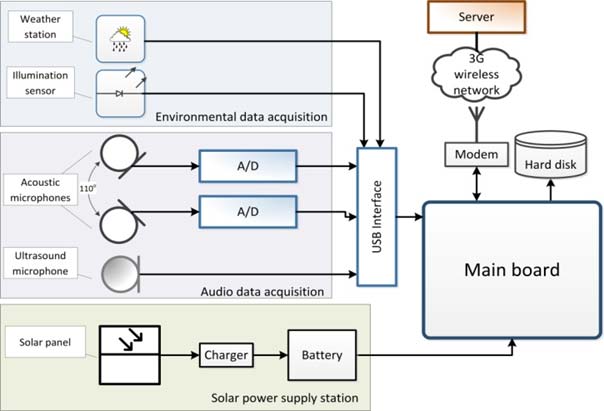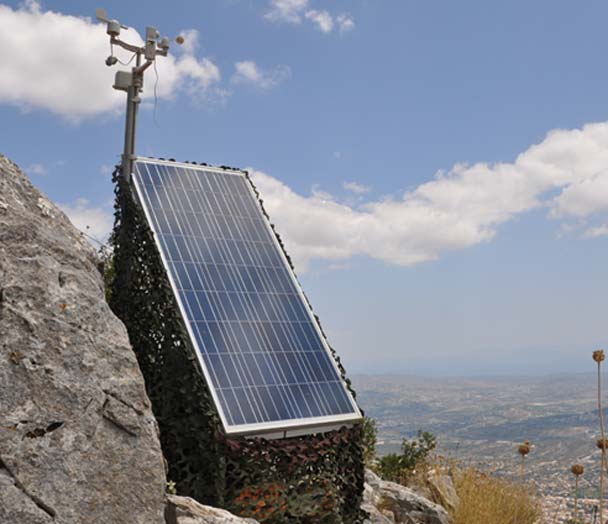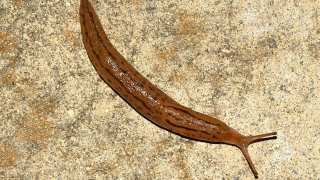Animals use acoustic vocalization as a very efficient way to communicate, as the sound does not require visual contact between the emitter and the receiver, can travel over long distances and can transfer information under such low visibility conditions as in dense forests, night and rainy conditions. The Amibio project, implemented with the contribution of the LIFE financial instrument of the European Union between July 2009 and June 2013, established novel technological solutions to automatically monitor biodiversity using autonomous remote data collection units and dedicated sound processing algorithms.
Automated acoustic monitoring of wild animal species would not be possible without a good knowledge of the biodiversity present in a specific area. Species have to be inventoried and recordings of their vocalizations need to be gathered, identified, tagged, and archived in order to calibrate the sound identification software. A multidisciplinary team of biologists, forest managers, and hardware and software engineers were formed by Amibio, in order to efficiently and adequately address every aspect of the research project.
AmiBio Project Objective
The AmiBio project is aimed at constructing and deploying autonomous multi-sensor monitoring stations. Once recordings have been collected, the transmitted measurements are automatically, for long-term monitoring of biodiversity activity trends. The focus of this project is the region of Hymettus, a mountainous area located at the eastern periphery of Athens. The acoustic monitoring stations, which are non-intrusive and cost-effective compared to human expeditions, assist in systematic seasonal and longitudinal long-term environmental monitoring that will allow the automatic inventory and examination of the biological diversity of the study area. The monitoring stations record audio signals, temperature, humidity, illumination, wind speed and direction, before transmitting this data to a central station far away from the monitoring region. Special computer software at the central station, deployed in the premises of the Association for Protection and Development of Hymettus (SPAY) and in the University of Patras, then performs automatic species identification and statistical analysis, thus contributing to a continuous biodiversity survey of the designated areas. The project team planned to deploy the prototype hardware system in relevant habitats, such as forest, open habitats, and rock cliffs, to gather and transmit recordings of audio and data on environmental variables to a central station.

AmiBio concept. Images provided by the author
Expected outcomes of developing autonomous remote recording stations and analysis of their data are:
- Data repository of audio recordings and database management tools in support of research on bioacoustics and animal behavior.
- Software for automatic recognition of species from their sound emissions.
- Prototype of an acoustic monitoring system operating in 24/7 mode.
- Estimation of the density of sound-emitting animal populations.
- Monitoring of rare and threatened species.
- Monitoring and alarming of specific atypical sound events, such as gunshots, off-road motor bikers, etc.
- Monitoring for natural calamity and human induced disasters, such as fire.
Project Implementation Area
Name of the project area: Hymettus area, with forest Kaissarianis and Lake Vouliagmenis
Surface area: 8836.91 ha
EU protection status: NATURA 2000 Code : GR3000006
Hymettus, (Greek: Υμηττός), is a mountain range east of Athens, Attica, Greece. The altitudinal range is between sea level at the beaches in the Vouliagmeni area and 1026 m at Mt. Evzonas. The distance between the northern and southern extremes of the area is 16 km and between Athens in the west and the Saronic Gulf in the east 6 to 7 km.
The close vicinity to the densely populated municipal areas of Athens has adverse effects on the area’s conservation status. Frequent fires, grazing of goats and sheep, illegal dumping of waste, and construction of antennas, as well as the construction various facilities of Public Institutions, like military camps, marble quarries and the expansion of residential areas in various Municipalities have been causing a severe alteration of the landscape of Hymettus. However, the restoration of the terrain’s relief and vegetation cover is difficult and expensive.
The target species are all the sound-emitting animals in the Hymettus. The main habitats targeted in the AmiBio project are: rock cliff, phrygana, pine forest and maquis scrubland.

Images provided by the author.
System Architecture
The overall architecture of the Amibio system consists of three major parts: the automatic monitoring stations, the cellular network and the central server. The sound recording stations are autonomous devices equipped with a high-quality multichannel audio recording module and an environmental parameters logging module for data acquisition. Each device can be configured to operate in various modes, including continuously 24/7, at carefully selected predefined locations and depending on the specific requirements/limitations of each location. The monitoring station has been designed on a sub-component logic, meaning it is a combination of components and equipment connected under a specific architecture.

Hardware architectural model of the AmiBio automatic monitoring stations. Images provided by the author
The 3G cellular network connects the monitoring stations with the server. Despite the ongoing progress in the wireless communication technologies, the current transmission rates supported by the available standards do not satisfy the requirements of AmiBio. A trade-off between the access to live content and the volume of this content had to be addressed. In other words, the need for wireless transfer of the data to the server opposes the need for high-quality audio from multiple microphones. A flexible and dynamic scheme for the exploitation of the network resources was crucial. In order to decouple the supported data volume from the network condition, an external storage medium is used. The server is a computer deployed at the central base station and it is responsible for the task of receiving the audio files sent by the sound recording stations, for further processing and storage. The audio recording streams that are transmitted to the base stations through the GSM network are temporarily stored and processed in order to automatically extract sound event annotations and build the appropriate data files for the AmiBio database. In this way, the biodiversity activity in terms of audio acoustic events is captured. Audio processing tools are also utilized for the detection and capturing of atypical acoustic events of interest and the update of the online monitoring map of the Hymettus mountains.

HYM010/ Mount Efzonas Cliff monitoring station. Images provided by the author
The AmiBio Database
The AmiBio system can handle a huge quantity of data, mostly audio, which is recorded by the monitoring stations and continuously transmitted to the central station for storage and statistical analysis. Handling the Petabytes of data at the central station imposes many requirements with respect to the database functionality and the corresponding management tools. The database repository, software and data management tools consist of three major parts:
- sound files (as generated and labeled by the recording units),
- software components for sound annotation and manipulation (Praat), as well as algorithms for (semi)automatic species recognition and/or feature extraction, and
- a relational database sensu strictu which stores metadata on sounds, taxa, monitoring stations, together with hyperlinks to multimedia data (sound files and photos of species and sites).
The ensemble of these components can be considered as the AmiBio data warehouse. A challenge for this data warehouse was the seamless integration of its components: for example, automatic species detector components are documented and administered through the database, together with the results of identification runs, while the software itself runs outside the database, browsing through a selection of sound files (hosted outside), via scripts which are generated through appropriate database queries (usually SQL-statements). Results again are stored within the database, as a taxa name connected to a certain sound recording, which represents a copied fragment of the original sound recording.
The main purpose of the database management tool was to provide access to the AmiBio database and repository of the original sound recordings, processed audio signals, and reference recordings, which facilitates the management of the audio files and related metadata. Within the AmiBio database, three main repositories have been foreseen:
- Unidentified sounds: All recordings for which no annotation information exists.
- Reference sound library: All recordings which are linked with annotation/metadata information.
- Training library: All recordings which are manually confirmed as “excellent” ones.
All the database management tools are executed through a web-based interface, which also enables the users to annotate selected recordings.
Top image: Sounds wave. (Public Domain)
References:
- I. Mporas, T. Ganchev, O. Kocsis, N. Fakotakis, O. Jahn, K. Riede – “Integration of temporal contextual information for robust acoustic recognition of bird species from real-field data”, I.J. Intelligent Systems and Applications, 07, 9-15 (DOI: 10.5815/ijisa.2013.07.02), 2013.
- O. Jahn, I. Mporas, I. Potamitis, I. Kotinas, Ch. Tsimpouris, V. Dimitriou, O. Kocsis, K. Riede, N. Fakotakis, The AmiBio Project – automating the acoustic monitoring of biodiversity, Proceedings of IBAC 2013 Conference, Pirenópolis, Brazil, September 2013.
- S. Ntalampiras, I. Potamitis, and N. Fakotakis, “Acoustic detection of human activities in natural environments”, Journal of the Audio Engineering Society, 2012.
- S. Ntalampiras, I. Potamitis, and N. Fakotakis, “Probabilistic novelty detection for acoustic surveillance under real-world conditions”, IEEE Transactions on Multimedia, Vol. 13, No. 4, August 2011.







No comment